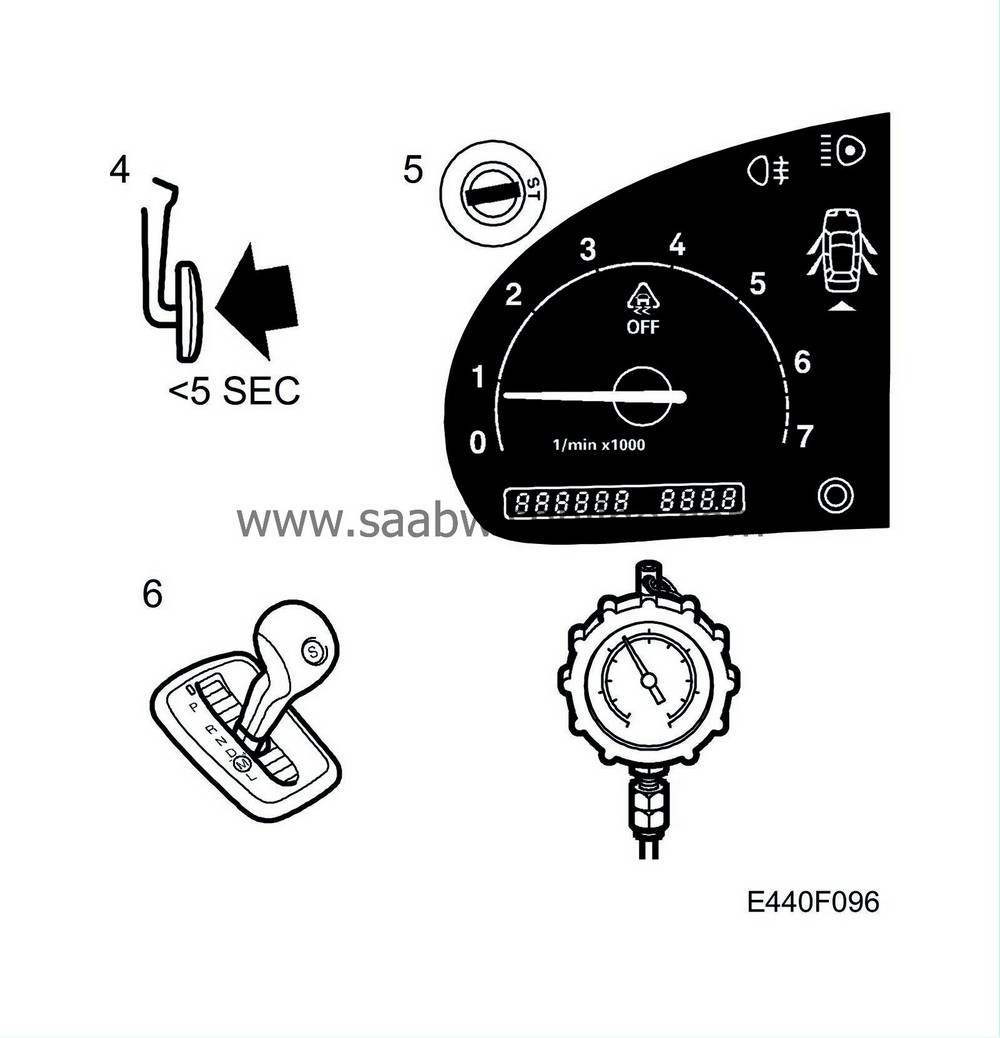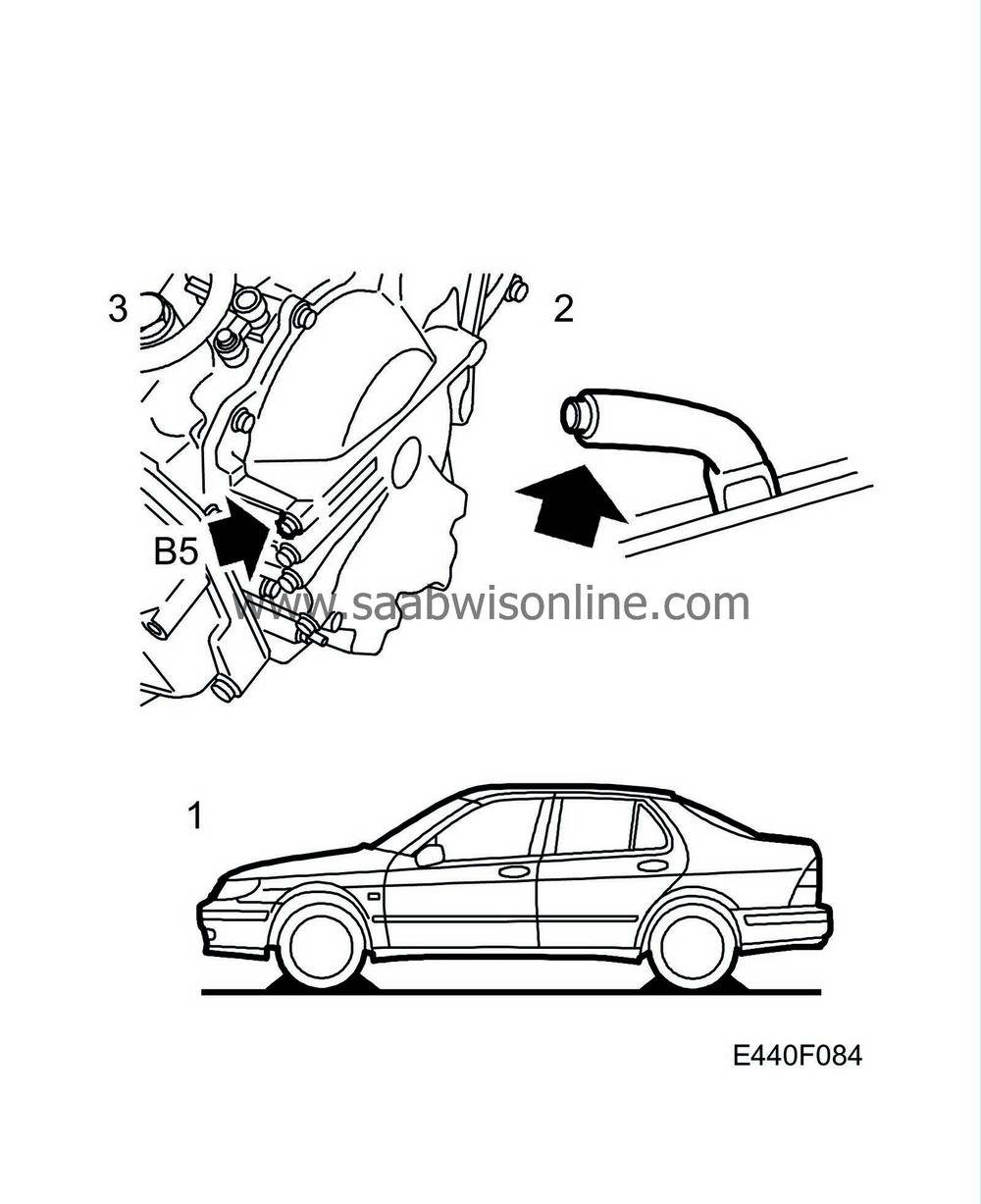Checking hydraulic pressure
|
|
Checking hydraulic pressure
|
The hydraulics are tested by measuring the system pressure in D and R positions at idling and stalling speeds. The test indicates the condition of the transmission.
|
1.
|
Put chocks under all 4 wheels.
|
|
2.
|
Apply the handbrake fully.
|
|
3.
|
Remove the test plug (for B5) from the gearcase and connect an oil pressure gauge.
|
|
4.
|
Press the brake pedal down hard.

|
|
5.
|
Start the engine and check the idling speed (825 rpm).
|
|
6.
|
Fully depress the footbrake and select D or R and check the system pressure against the values in the table.
Position
|
Idling
|
Stalling speed
|
D
|
3.4 - 3.9 bar
|
13.1 - 14.2 bar
|
R
|
5.1 - 6.2 bar
|
17.4 - 20.2 bar
|
|
Important
|
|
Do not run for longer than 5 seconds when testing as the oil temperature can rise above the permitted level. Wait at least 1 minute between tests.
|
|
|
Check that no leaks arise while the oil pressure gauge is connected.
Results of hydraulic test
|
Fault reason
|
Pressure greater than value specified above for both D and R
|
- Faulty SLT
- Fault with voltage to valves
|
Pressure lower than value specified above for both D and R
|
- Faulty SLT
- Fault with voltage to valves
- Fault with oil pump
- Fault with brake B5
- oil leakage in hydraulic circuit for D or R
|
Pressure lower than value specified above for D
|
- Insufficient system pressure
- Fault with C1
|
Pressure lower than value specified above for R
|
- Fault in hydraulic circuit for R
- Fault with C2
- Fault with brake B3
|
|




